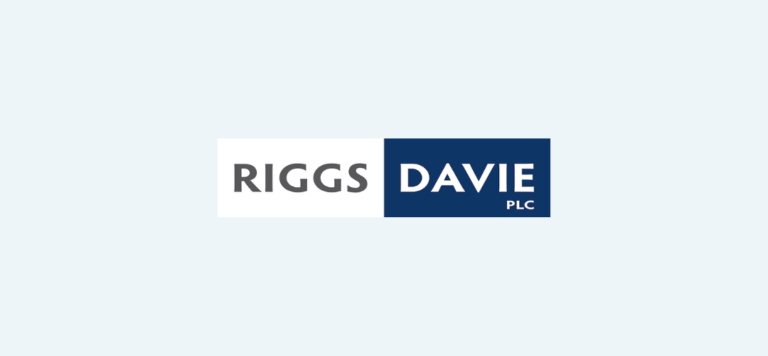The (Realistic) Guide to Organic Social Media for Small Businesses
If you’re reading this, chances are you’re handling social media in-house and when you’re running a tight ship with a small team, social media might not be top of your priority list. While we’d typically suggest partnering with a marketing agency for optimal results, we understand that’s not always feasible with limited resources and it’s tough to focus on social media when you’re being pulled in a thousand different directions.
But here’s a wake-up call: with an estimated 4.9 billion people using social media globally, its importance can’t be overlooked. And since 77% of businesses are already using social media to engage customers and as a revenue driver, it’s a space you don’t want to neglect. Your competitors might already be there, charming your potential clients.
Now that you grasp WHY social media is crucial, the big question is HOW to find time for it. You’ve probably stumbled across complex guides online that are overwhelming. But fear not – we’ve crafted a realistic, straightforward guide to help you build a strong social media presence without the headache. Let’s dive into the essentials of creating an impactful brand presence on social media with the resources you have.
The Difference Between Paid & Organic Social Media
f you’re just dipping your toes into the social media scene, you might be curious about what organic social media really means. Simply put, unlike its paid counterpart, organic social media is all about natural engagement – no ad spend needed. This is a game-changer for small businesses on tight budgets, offering a cost-free way to expand their reach.
Paid Social Media:
- What It Is: Paying for ad space on social platforms. Think sponsored posts, display ads, and the like.
- The Purpose: To quickly boost reach, target specific groups, and prompt actions like sales or leads. Plus, tracking ROI is a breeze.
- The Catch: It can feel a bit less genuine. Today’s savvy consumers know when they’re being marketed to.
Organic Social Media:
- What It Is: Posting content on your business profile without paying for extra reach.
- The Purpose: To grow and nurture relationships, carve out a unique brand identity, and keep up with customer service and engagement.
- The Perk: It’s authentic and fosters deeper connections.
- The Effort: It’s free, but it demands your time and creativity to keep the content fresh and engaging
Know Where Your Audience and Industry Is
The average social media user engages with an average of 6.6 various social media platforms. That’s A LOT! Now, we’ve all heard the mantra: “Be where your audience is.” But before you panic about managing seven different social media accounts, let’s talk quality over quantity.
Instead of spreading yourself thin across multiple platforms without a solid strategy, why not focus on two or three that truly resonate with your audience and make sense for your business? This approach not only makes your life easier but also ensures your social media efforts are more impactful.
Think about it this way – when you’re shopping online and find a new brand, you check their Instagram or Facebook for authenticity. If they’re active there, the absence of a LinkedIn profile hardly matters, right?
However, if you’re seeking a service like an accounting firm, and they lack a LinkedIn presence, it might raise an eyebrow or two. That’s because different industries have different platforms where their presence is crucial.
It’s not necessary to be everywhere, it’s not even necessary to be everywhere your customer is, but it’s critical to be where customers go to interact with brands in your industry. It’s probably unlikely you know this off the top of your head, but do some research to figure this out. If you’re having trouble it may be beneficial to stalk the competition. See where your competitors are thriving and chances are, that’s where your audience is too.
Don’t know where to even start? Below is a list of popular social media platforms, and what types of businesses they are best for:
Ideal for most businesses, particularly those aiming to build community engagement and targeted advertising. Suitable for both B2C and B2B companies.
Best for lifestyle, fashion, beauty, food, travel, and visual art businesses. Great for brands aiming to showcase products or services visually.
Ideal for B2B businesses, service providers, recruiters, and companies looking to establish thought leadership in their industry.
Great for businesses in fashion, home decor, crafts, food, and any brand with a strong visual appeal. Useful for driving e-commerce sales.
YouTube
Ideal for businesses that benefit from video demonstrations, such as tech gadgets, educational content, beauty tutorials, and entertainment channels.
TikTok
Suitable for B2C brands targeting Gen Z and millennials, particularly in fashion, entertainment, and lifestyle sectors. Great for creative, trend-driven marketing.
Determine the Purpose of Each Social Media Platform
Not all social media platforms are created equal. Each has unique user behaviors, making it crucial to treat them independently rather than cross-posting identical content. Simply replicating posts across all platforms can lead to reduced engagement and a perception of laziness or spamming. It also means missing out on each platform’s specific features.
The key to efficiency in managing multiple platforms is defining each one’s purpose. Take Wendy’s, for instance: their Twitter (now X) was known for its humorous and sassy customer interactions, while Facebook focuses on traditional marketing content like promotions, and Instagram showcases visually appealing images with a casual tone.
Understanding the purpose of each platform helps in crafting resonant content, maintaining a consistent brand voice while adapting your message, and identifying key performance indicators (KPIs) to track.
So you’ve already researched platforms your audience and competitors are on, but now it’s time to do a little more digging. Check out your competitors and industry leaders on each platform you are using to see what types of content work well for them in terms of engagement and audience growth and make sure to understand the strengths (like Instagram’s visual appeal) and limitations (like Thread’s 500-character word count) of each platform too.
Now it’s time to get personal… about your business that is. It’s time to align the strengths of each platform to your business goals. Take a look at your business goals and consider how the platforms you are on align with those. Maybe you want to generate more leads – LinkedIn is perfect for that. Or maybe you want to improve customer service – Threads or X are great for real-time engagement and updates. Set specific targets based on the business goal and the platform’s strengths. If a platform doesn’t align with your goals, consider focusing elsewhere to optimize your time.
Create a Strong Content Strategy
Pop Quiz: Is a half-hearted social media page with outdated posts better than no presence at all?
With 75% of consumers using social media to research brands, ideally, you’d have a thriving online presence. But let’s face it, in the small biz world, you might be facing one of these scenarios. Remember, a neglected social media page can harm your brand more than having no page at all. With 65% of global consumers shunning brands after a bad experience, and nearly half avoiding brands due to their online reputation, it’s clear: if you’re going to be on social media, being active, consistent, and engaging online isn’t just nice – it’s necessary.
So, how do you keep your social media buzzing without burning out? First, quality and consistency trump daily posts. Don’t post just for the sake of it. Ensure each post adds value and engages your audience. A social media calendar can be a lifesaver here, helping you plan and schedule content effectively.
What counts as quality content? Stick to the 80/20 rule: 80% of your posts should offer value, and only 20% should be promotional. Scour your files for useful info about your products or services, answer FAQs, or showcase glowing testimonials. You’ve likely got a goldmine of content already!
User-generated content (UGC) is another gem. It’s any content created by customers about your business, and it’s gold for authenticity and trust. Not much UGC? Consider incentives like contests or rewards to get that content flowing.
Now, don’t just throw content out randomly. Pick themes relevant to your audience and platform to maintain a consistent brand image. And finally, streamline your content creation process. Break it down into manageable steps: ideation, drafting, reviewing, approving, scheduling, and posting. If social media isn’t your jam, this approach helps you tackle it in bite-sized chunks, keeping the beast at bay!
The Final Piece: Analytics and Improvements
ou’ve almost got your social media strategy complete now, but we can’t leave out the most important part! Remember, what gets measured gets managed and we want to manage our social media presence. After all, you’ve already put so much hard work into it, don’t you want to make sure it’s successful?
We’ve set our specific goals for each platform, now it’s time to track them. Choose the right KPIs for each platform to track the progress of your goals. Here is a list of possible metrics to track that may inform you on how well you are achieving your goals:
- Engagement Metrics: Track likes, comments, shares, and mentions to gauge audience interaction.
- Reach and Impressions: Measure how far your content is spreading and how many times it’s seen.
- Traffic Metrics: Track the number of visitors coming to your website from social media.
- Conversion Metrics: Measure actions like newsletter sign-ups, downloads, or purchases that come from social media.
- Follower Growth: Monitor the rate at which your follower base is increasing.
So what do we do with these numbers? If the numbers are good, keep on going your strategy is working. But with the ever-changing social media world, odds are there will come a time when your KPIs are low. If this happens start by going back to your content strategy, and look at trends in the types of posts. Is there a specific format that’s performing lower? Maybe the content is great, but your engagement is low because you aren’t catching people’s attention with the format. Or maybe the format is fine, but the topic isn’t of interest to your audience. Your strategy should always be iterated to continue to meet the evolving needs of your audience, let these stats inform you what is working and what’s not.
Consistently track these metrics month to month and stay flexible, ready to adjust your strategy as needed. It’s all about staying in tune with your audience’s needs and making sure your social media strategy stays on pace with the ever-evolving world of social media!
Taming the social media beast doesn’t have to be a solo mission. Remember, not knowing every intricacy of your business doesn’t diminish your capability as a leader. With the right circle of support and a wealth of resources, growing and scaling is not just possible, but probable. That’s where BrainTrust steps in. Our community thrives on peer-to-peer learning, helping women business owners through the collective expertise of our members. Together, we’re committed to helping each woman achieve her business aspirations. If you’re seeking a supportive network to learn more about business topics (like social media) to help you grow and scale, explore our membership options and discover how BrainTrust can be a catalyst for your success.








